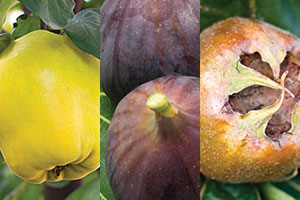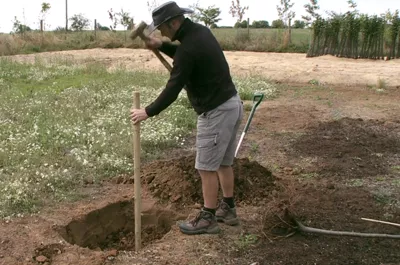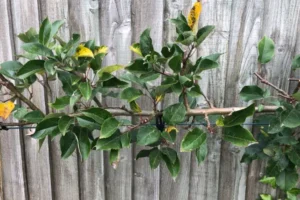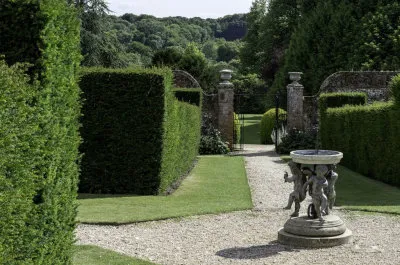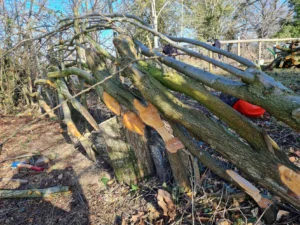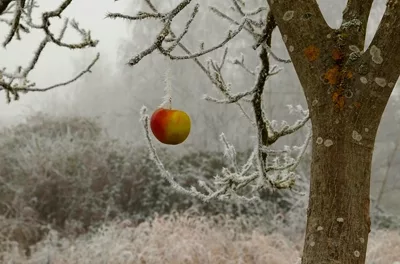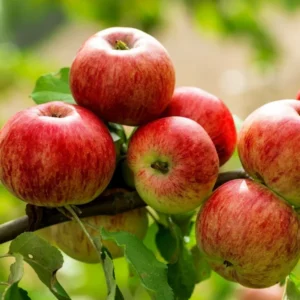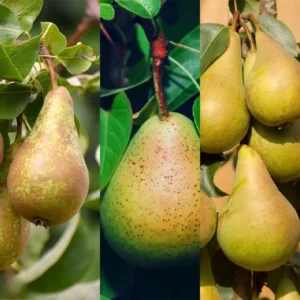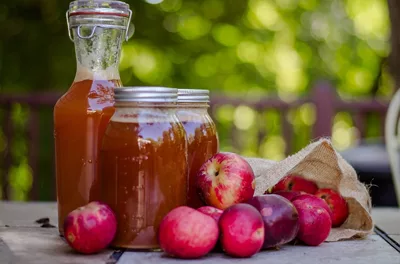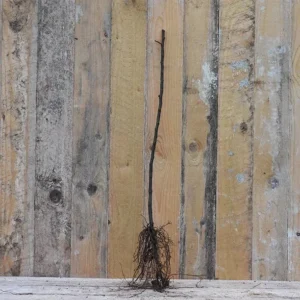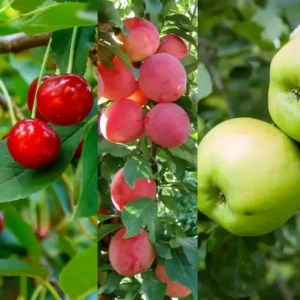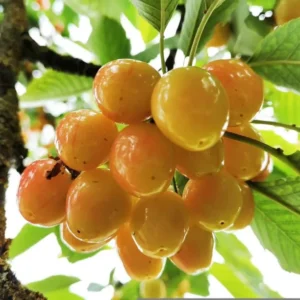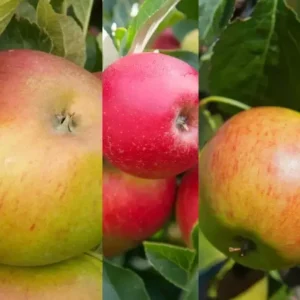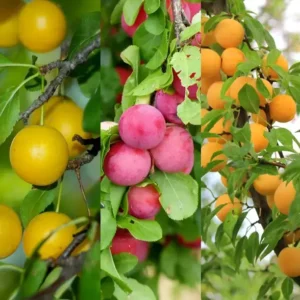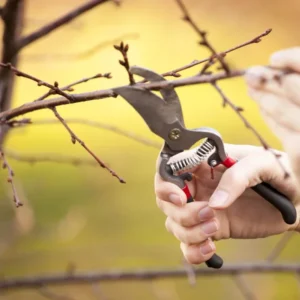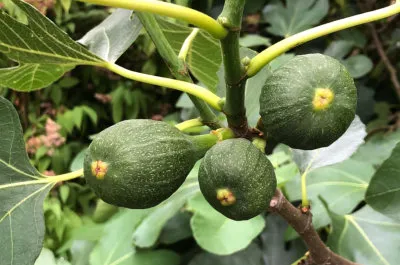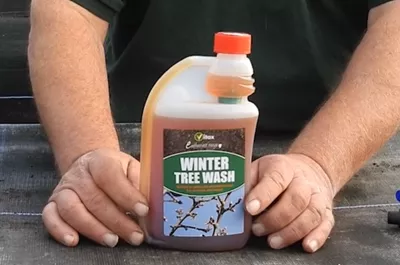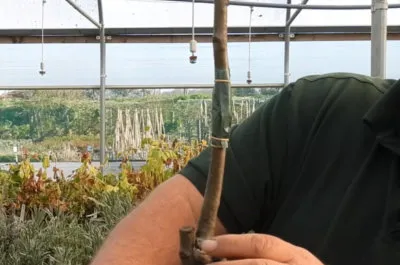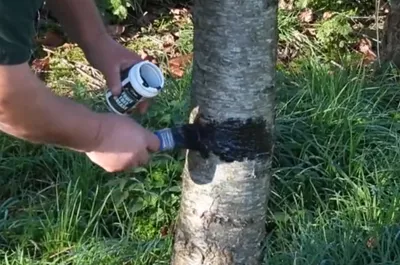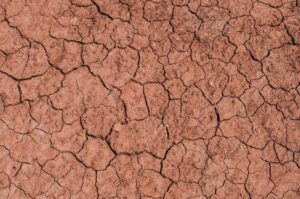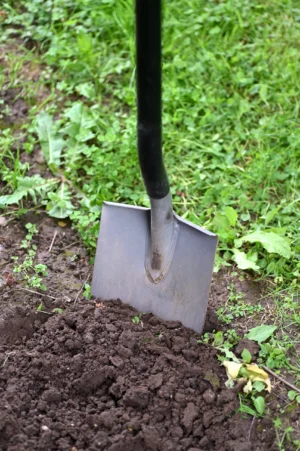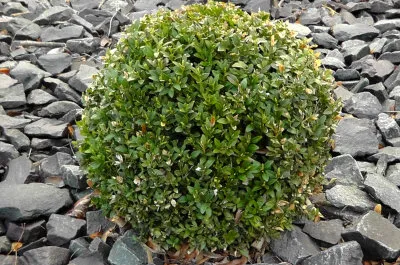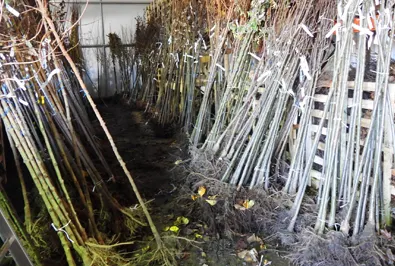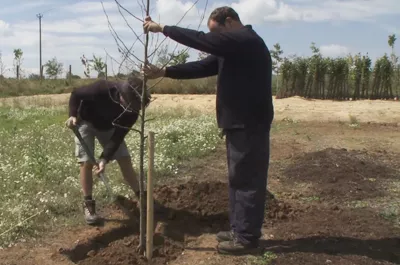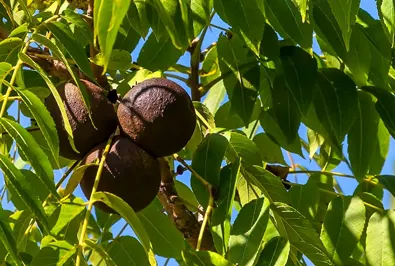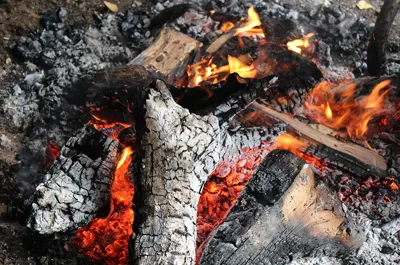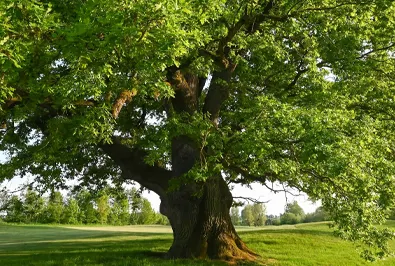Mixed orchards are the future of home growing
How to Plant A Fruit Tree
Fruit Tree Planting Watch our step-by-step video showing you how to plant bush or half-standard sized fruit tree with a small 120cm tree stake.It applies to any bush or half-standard size fruit tree: apple, pear, cherry, plum, quince, etc. All fruit trees have a graft union where the rootstock is fused to the scion: this union point should be above ground level. VIDEO TRANSCRIPT Hello,… Continue reading How to Plant A Fruit Tree
Building Wire Supports To Grow Fruit On Walls, Fences & Posts
This post concentrates on fruiting plants, but the same principles apply to an ornamental “wall shrub”. How to start training fruit trees on wires These instructions apply to fixing wires to existing fences or walls for training maiden fruit trees into cordon, espalier, fan, and sometimes “step-over” shapes.Some nurseries sell some of those shapes in a starter… Continue reading Building Wire Supports To Grow Fruit On Walls, Fences & Posts
Planting a Garden Hedge Like Beech, Yew, Laurel
How to Trench Plant a garden hedge like Privet, Beech, L:aurel, or Yew in well dug soil
Hedgelaying in the UK
Hedgelaying Services & Grants What is Hedgelaying? For those who don’t know, asking a farmer is a sensible place to start: Hedge laying is the art of rejuvenating a hedge to keep it solid and stockproof. How to Lay an English Country Hedge The National Hedgelaying Society has records of over 30 hedgelaying styles, the eleven most common… Continue reading Hedgelaying in the UK
Best Cold Hardy Apple Trees For The North & Scotland
Apple Tree Varieties Suitable for Scotland & the North Apple trees are incredibly hardy, however, their flowers can be damaged in freezing weather, which prevents them from cropping that year. The damage happens when frozen flowers defrost too quickly, so a solution for all but the coldest conditions is to plant your fruit trees against a west facing… Continue reading Best Cold Hardy Apple Trees For The North & Scotland
Best Apple Tree Varieties to Grow in the UK
The British climate makes for ideal apple territory. They like well drained, fertile soil including clay, and with shelter can grow inland at altitudes up to about 900 feet / 275 metres! Apple trees are the largest range of fruit trees we have for sale. Before you buy an apple tree, have a think about which varieties… Continue reading Best Apple Tree Varieties to Grow in the UK
Best fast-growing hedge plants for blocking the neighbour’s view!
If your neighbours are seeing too much for comfort, a mature hedge between you is a fine sight! But growing a privacy hedge in order to block the neighbour’s view requires patience. With these fast-growing species, your hedge will be towering tall as quickly as possible. The High Hedges Act Applies to any hedge over… Continue reading Best fast-growing hedge plants for blocking the neighbour’s view!
Planting A Bareroot Mixed Native Country Hedge
How to Slit Plant bareroot whips like Hawthorn in mixed native hedges
Pear Tree Pollination Groups Chart UK
Choosing Pollination Partners for Pear Trees Use our easy pollination checking tool to quickly find pollination partners for a given pear tree, or browse the table below. To make fruit, most pear trees need to be cross-pollinated with another variety that is in flower at the same time; even self-fertile varieties produce better crops with a partner. Pollination… Continue reading Pear Tree Pollination Groups Chart UK
Making Your Own Cider
Can I make cider from eating and cooking apples? Yes, all apples make cider, but the flavours from cider apples are better: most home cider brews are a mix of several varieties, the more, the merrier. How to Make Cider Here are two excellent videos on making your own cider at home. MIT has a… Continue reading Making Your Own Cider
Types of Fruit Tree Rootstock
To graft your own fruit trees, you can buy Apple, Pear, Cherry, and Plum rootstocks from us. Grafting is the only way to propagate more of a particular fruit tree variety Grafting is satisfying work, it’s a joy to give a new run to a beloved old, possibly dying tree whose name has been lost. A named cultivar (cultivated variety), like a ‘Bramley’… Continue reading Types of Fruit Tree Rootstock
Fruit Tree Pollination Group Charts
Two Ways to Find Pollination Partners Cross Pollination Increases Fruit Crop Size The common fruit trees of Europe, whether with pips like apples or with stones like plums, have flowers with male and female parts. For fruit to form, the female part (pistil) must receive pollen from the male part (stamen). A self fertile fruit tree can use… Continue reading Fruit Tree Pollination Group Charts
Cherry Tree Pollination Groups Chart UK
We grow a good range of self fertile sweet cherry trees that do not need to be pollinated. However, more than half of our range, including all the earliest cropping cherries, will need a pollination partner to bear fruit. Use our pollination tool to quickly find partners for a given tree.See pollination tables for other fruit trees. Pollination Groups:Pollination groups… Continue reading Cherry Tree Pollination Groups Chart UK
Apple Tree Pollination Groups Chart UK
Pollinating your Apple Trees Increases your crop Size Most apple trees need to be pollinated in order to bear fruit, and even self-fertile varieties still benefit. However, apple and crab apple trees are very common all over the UK, even in the city, so there is a high chance that you have a suitable pollination partner in your area already, in which… Continue reading Apple Tree Pollination Groups Chart UK
Plum Tree Pollination Groups Chart UK
Many Plums Are Reliably Self Fertile Most plums are either reliably self fertile or partially self fertile, so pollination is much less of an issue than with most other fruit trees; even “Non-Self Fertile” varieties are more like “Low-Self Fertile”.And there are probably compatible plums already in your neighbourhood. Plum Pollination Use our easy pollination checking tables or pollination… Continue reading Plum Tree Pollination Groups Chart UK
Looking After Fruit Trees
Essential Aftercare & Maintenance for Good Crops Clean Up Leaves & Prunings When the crop is in, and winter is knocking on the door, rake up the fallen leaves and twigs from under your fruit trees. Then burn or bin them: do not compost. More fungal infections overwinter on fallen fruit leaves than anywhere else. When you… Continue reading Looking After Fruit Trees
How To Grow ‘Brown Turkey’ Figs
The most popular fig variety in the UK for getting fruit from is the ‘Brown Turkey’ fig.The instructions for ‘Brown Turkey’ apply to other figs, such as the wild species Ficus carica, but those are more commonly grown as ornamental trees.The dwarf variety, ‘Little Miss Figgy‘, is different: very slow growing and requires little pruning. How… Continue reading How To Grow ‘Brown Turkey’ Figs
Applying Winter Wash Fruit Tree Insecticide
How to Apply Winter Wash to Fruit Trees It’s good to apply winter wash to your fruit and ornamental trees in the winter when there are no leaves on the trees (the spray will scorch leaves, so it is only suitable for winter use). Our winter wash is an organic pesticide that works by attacking the waxy compounds that make up… Continue reading Applying Winter Wash Fruit Tree Insecticide
Apply Fruit Tree Grease Bands to Protect them against Moths
Grease Bands are Convenient on Young Fruit Trees If you apply grease bands to your young fruit trees, it will help prevent winter moths laying their eggs. When these hatch, the caterpillars eat the leaves and fruit. You only use grease bands on younger fruit trees with smooth bark, older trees need to be painted with grease. VIDEO… Continue reading Apply Fruit Tree Grease Bands to Protect them against Moths
Apply Grease to Fruit Trees to Protect them against Moths
Applying fruit tree grease from November onwards is used to trap a wide variety of winter moths before they can lay their eggs and preventing caterpillars eating the leaves and fruit. In the video below, we show you how to apply the grease to protect your fruit trees. You will need an old paint brush to apply the… Continue reading Apply Grease to Fruit Trees to Protect them against Moths
Preparing Clay Soil
Why Clay Soil is Special Soil compaction tends to be worse on heavy clay, so breaking up the soil to a good fork’s depth at the bottom of the planting hole is often very beneficial, as is working over a larger area than strictly necessary for the planting hole. Improving Clay Soil Options Improving Planting… Continue reading Preparing Clay Soil
Prepare Soil For Planting Trees, Shrubs & Hedges
This article is primarily about preparing soil before planting trees (ornamental or fruiting), hedging, roses, and other shrubs. It won’t consider vegetable beds, where more work might be justified, or perhaps No-Dig methods. Soil preparation is important because it helps strong roots to establish quickly. If the roots struggle to settle in, the whole plant will struggle. Like so many things in gardening,… Continue reading Prepare Soil For Planting Trees, Shrubs & Hedges
Transplanting Evergreen Trees & Shrubs
Moving Evergreens Without Killing Them This article is all about moving evergreens like box, yew or pyracantha. Moving plants is not complicated, but by minimising the stress they endure, your success rate will be much higher. Preparation before digging up your plants You need a plan. Are you going to replant immediately? If so then make sure the new… Continue reading Transplanting Evergreen Trees & Shrubs
Best Time To Plant Hedges & Trees In the UK
“Which month is best for planting?” is an age-old debate! You can plant trees or hedges at any time of year. There are pros & cons to each season. Watering new plants well in dry weather until they are established is the most important thing. Bareroot Season Starts In Autumn – November With woody plants like trees, hedge plants, or rose bushes, it’s always better to… Continue reading Best Time To Plant Hedges & Trees In the UK
How To Pleach A Flat-Head Lime Tree
How to pleach a flat-headed Lime tree Pleaching trees creates a “hedge on stilts”. Many trees are suitable, and limes are ideal pleached subjects: VIDEO TRANSCRIPT So, I'm going to show you how to pleach a lime tree, which are useful for aerial hedges to fill in a gap above a wall or to screen… Continue reading How To Pleach A Flat-Head Lime Tree
How to Plant a Tree With a Stake
Planting with a stake is optional but highly recommended.
Walnut Tree Tolerant Plants
Do Black Walnut Trees Kill Other Trees? The allelopathic (harmful to other plants) nature of Juglans nigra, Black Walnut, is widely thought to pose challenges for nearby plant life due to the secretion of juglone, a substance harmful to many other plants. This effect, stronger in wet soils low in organic matter like sand or clay, appears… Continue reading Walnut Tree Tolerant Plants
Poplar & Willow Short Rotation Biomass
Planting Willow & Poplar for Biomass Wood Fuel Details on many biomass related subjects. Biomass fuel is living or recently dead organic matter, such as wood, used to power generators and often to heat homes.It is the past, present, and future of renewable energy. Coppicing trees for a renewable source of wood is an ancient practice.… Continue reading Poplar & Willow Short Rotation Biomass
Native British Trees List
You can find all the native British trees listed here, and we grow and sell most of them. Definition of native VS naturalised trees True natives trees are often defined as:Trees that colonised Britain during the time between the end of the ice age about 10,000 years ago and the formation of the Channel by the… Continue reading Native British Trees List

